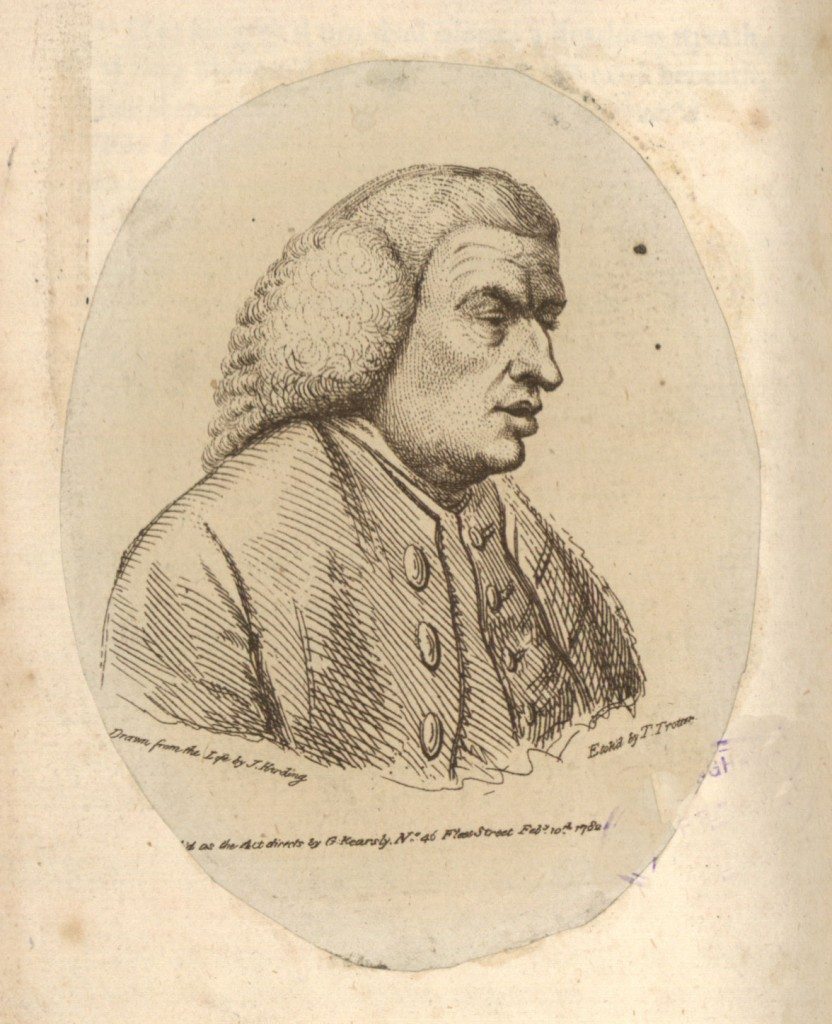Samuel Johnson and Greene’s Museum
Image: Portrait of Samuel Johnson. Johnson was born and educated in Lichfield and had a great interest in Greene’s collections. John Jackson, History of the City and Cathedral of Lichfield (London, 1805).
Image from: Local Studies and History, Birmingham Central Library
The success of Greene’s museum was such that it was open for six days a week.
Samuel Johnson visited it several times, and in 1776 J.Boswell wrote:
We went and viewed the museum of Mr. Richard Green, apothecary here, who told me he was proud of being a relation of Dr. Johnson’s. It was, truely, a wonderful collection, both of antiquities and natural curiosities, and ingenious works of art. He had all the articles accurately arranged, with their names upon labels, printed at his own little press; and on the staircase leading to it was a board, with the names of contributors marked in gold letters. A printed catalogue of the collection was to be had at a bookseller’s. Johnson expressed his admiration of the activity and diligence and good fortune of Mr. Green, in getting together, in his situation, so great a variety of things; and Mr. Green told me that Johnson once said to him, “Sir, I should as soon have thought of building a man of war, as of collecting such a museum.” Mr. Green’s obliging alacrity in shewing it was very pleasing.
Later Samuel Johnson presented to Greene the inkstand with which the Dictionary of English Language was written.
« Previous in this sectionNext in this section »Continue browsing this section
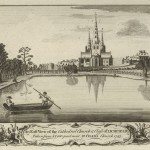 A Window on the World: Richard Greene’s Museum of Curiosities in Lichfield
A Window on the World: Richard Greene’s Museum of Curiosities in Lichfield
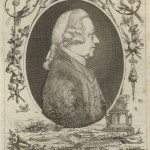 Richard Greene and 18th Century Museums
Richard Greene and 18th Century Museums
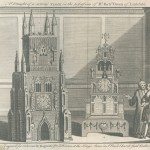 British Antiquities in Greene’s Museum
British Antiquities in Greene’s Museum
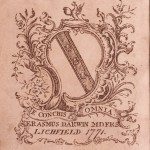 Natural History in Greene’s Museum
Natural History in Greene’s Museum
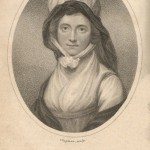 Curiosities in Greene’s Museum
Curiosities in Greene’s Museum
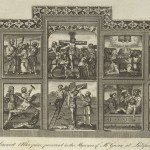 Curiosities in Greene’s Museum
Curiosities in Greene’s Museum
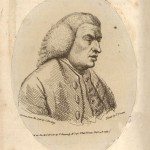 Samuel Johnson and Greene’s Museum
Samuel Johnson and Greene’s Museum
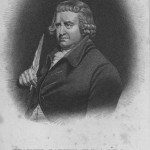 Erasmus Darwin, the Lunar Society and Greene’s Museum
Erasmus Darwin, the Lunar Society and Greene’s Museum
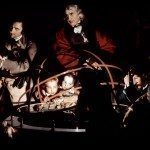 Joseph Wright of Derby and Greene’s Museum
Joseph Wright of Derby and Greene’s Museum
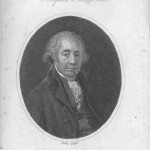 Matthew Boulton, John Whitehurst, Josiah Wedgwood and Greene’s Museum
Matthew Boulton, John Whitehurst, Josiah Wedgwood and Greene’s Museum
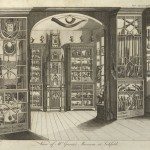 The Reputation and Importance of Greene’s Museum
The Reputation and Importance of Greene’s Museum



